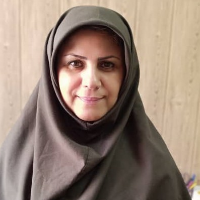Identifying the Challenges and Solutions of the Mechanisms of Providing and Allocating Financial Resources within a Faculty (case study: University of Tehran)
The upcoming research aims to identify the challenges and solutions of the mechanisms of providing and allocating financial resources in the faculties of Tehran University. To achieve this goal, four questions were planned. 1) What challenges are Tehran University faculties facing in attracting new financial resources? 2) What challenges do Tehran University faculties face in allocating financial resources? 3) What solutions are for diversifying financial resources in Tehran University faculties? 4) Solutions for optimizing financial resource allocation mechanisms. What are the faculties of Tehran University?
This qualitative research was written using interpretive phenomenology. Therefore, using targeted sampling, interviews were conducted with 11 financial and administrative assistants of Tehran University. The data were analyzed using the seven-step method of Dickelman (2009). The technique of Member checking and peer review has been used to validate the data from two strategies.
In response to the first question, the findings were classified into 12 secondary subcategories and four primary subcategories: lack of ability in the financial development of the university, the inefficiency of rules and regulations, managerial-executive weakness, and weakness in infrastructure. In response to the second question, the findings were categorized into five secondary subcategories and two primary subcategories: traditional budgeting system and inefficiency of the organizational design of financial resource allocation. In response to the third question, the findings were grouped with 12 secondary subcategories and four primary subcategories: diversifying the university's income sources, amending laws and regulations, modern management, and infrastructure development. The findings were divided into five secondary subcategories in response to the fourth question. Generally, they included two primary subcategories: a performance-oriented budgeting system and an efficient and effective executive system in allocating financial resources.
Discussion and
In the current situation where universities in most countries are facing financial shortages and in providing and allocating financial resources, they are looking for new mechanisms to improve their efficiency and effectiveness. The results of this research can be a suitable road map for improving the performance of Tehran University in the future.
-
The Advantages and Challenges of Electronic Exams: A Qualitative Research based on Shannon Entropy Technique
AHMAD KEYKHA, MASOOMEH IMANIPOUR *, JAFAR SHAHROKHI, MOEIN AMIRI
Journal of Advances in Medical Education & Professionalism, Jan 2025 -
Exploring the Mindset of Doctoral Candidates at the University of Tehran: An Analysis from a Causal Layer Perspective
*, Mohammadmahdi Mohamadi, Mohammad Kazemi, Fereshteh Ghaemi
Iranian Journal of Management Studies, Winter 2025 -
Identifying barriers to the optimal implementation of employee training in National Gas Company of Iran: a qualitative research
Omid Oshaghi, *, Keyvan Salehi
Journal of New Approaches in Educational Administration, -
Presenting a conceptual model for identifying effective factors in students' talent identification (Meta Synthesis Approach)
Parinaz Rahmani Barouji, *, Javad Pourkarimi, Aliakbar Arjmandnia
Managing Education in Organizations,




